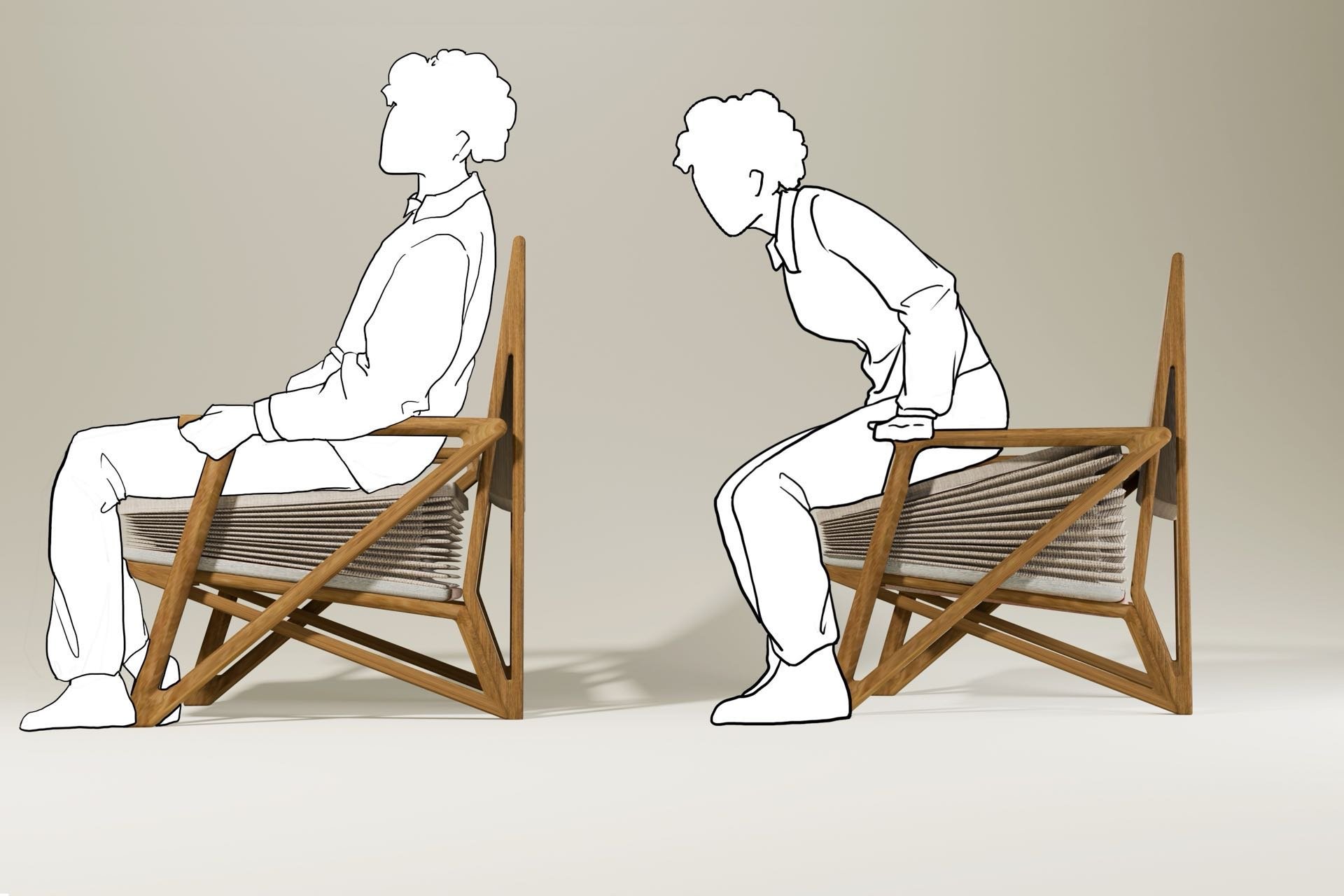Echo Chair
The Echo Chair is a thoughtfully designed assistive furniture piece that supports elderly users in standing up and sitting down safely and independently. Inspired by the nostalgic accordion—Inspired by the expanding motion of an accordion, the chair’s central mechanism is equipped with a hidden motor that gently lifts the user to a standing position.
Designed with a modern aesthetic, the chair blends effortlessly into any contemporary home, avoiding the stigmatizing look often associated with assistive devices. Triangular wooden structures ensure ergonomic stability and reflect the elegance of geometric construction, while all dimensions are optimized for aging bodies. This project challenges the boundary between daily furniture and medical aids, aiming for inclusivity through design.
Key Words: Inclusive Design, Assistive Device, Ergonomic Design, Motorized Assistance
Background
China’s aging population is growing rapidly, with individuals aged 65 and above expected to exceed 21% by 2032. This shift raises critical demands for age-adaptive home systems. Sit-to-stand transitions, common yet biomechanically demanding, become increasingly difficult for seniors due to reduced muscle strength and postural control.
Existing assistive devices often prioritize function over integration, resulting in clinical or stigmatizing appearances. This disconnect reinforces the psychological divide between users and their environment. This project responds by introducing a motor-assisted chair that bridges functional support and emotional acceptance through domestic, stigma-free design.
Design Concept
The Echo Chair draws its conceptual foundation from the accordion—a symbol of collective memory for a generation of Chinese elders. Its expanding, rhythmic form is reinterpreted into a motorized lifting mechanism embedded within the chair’s core, offering both functional support and cultural resonance.
Departing from conventional assistive devices that often carry a stigmatizing appearance, the design adopts the visual language of modern furniture. A modular triangular framework ensures structural stability while meeting ergonomic standards. The chair seamlessly integrates into home environments, transforming assistive functionality into an unobtrusive, emotionally grounded daily experience.
This design concept seeks to bridge the gap between assistive necessity and psychological comfort, emphasizing dignity, familiarity, and inclusivity in aging-in-place design.
Prototyping & Development
1.Model Design
2.Mechanical Design (Internal Linkage and Linear Actuator)
3.Usage Illustration
4.In-home Usage Scenario




